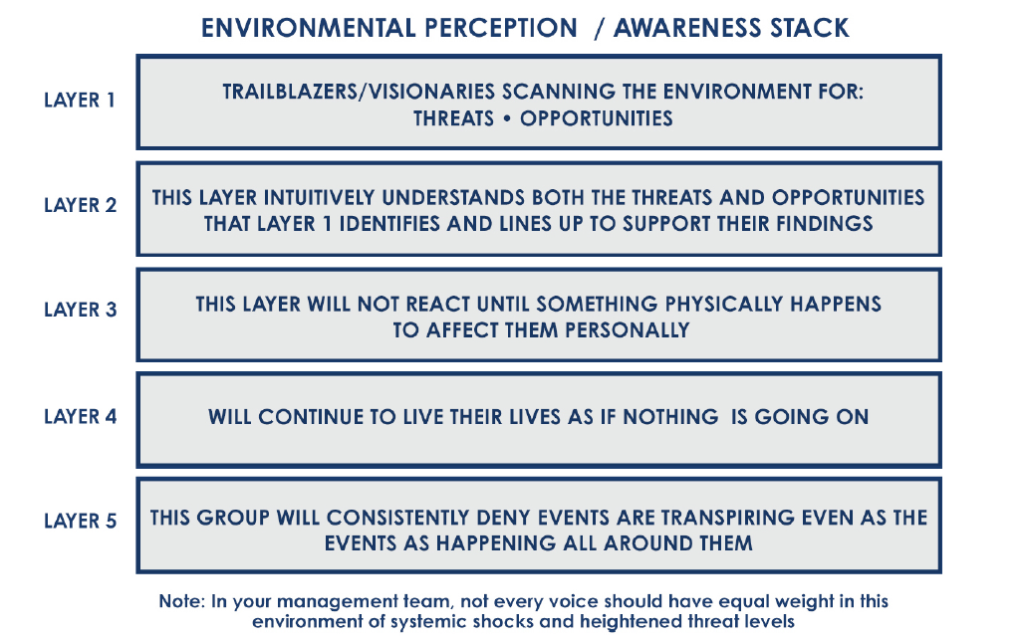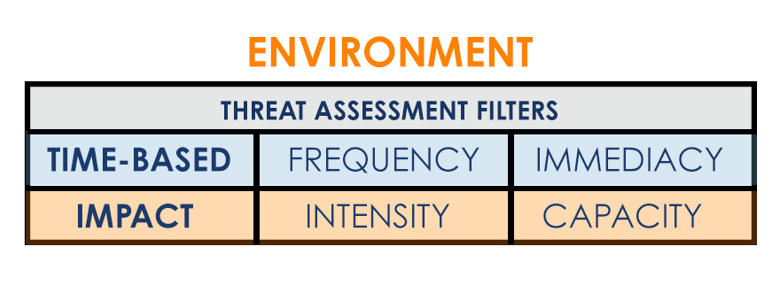The Importance of Management Team Composition in a Time of Instability
Business leaders are facing an unpredictable environment in which challenges and opportunities are constantly shifting in degree, frequency, and intensity.
CEOs are navigating their businesses through an era in which technology is remaking the very foundation of business, while also facing intensifying turmoil in the political, economic, environmental, and societal fronts.
In the latest vcfo Thought Leader Series webinar, we discussed the importance of having a management team that can scan the environment, effectively identify threats and opportunities, and quickly shift the company’s strategy and operational resources.
When asked how well they understand the makeup of their management team, most leaders are likely to believe that they have a good knowledge of their team. Asking related follow-up questions typically reveals a great deal of variability in how deep that understanding actually goes and how effective leaders are at capitalizing on it. Members of the management team must come to the table with the skills, talents, and cognitive ability required. Their personalities and style of interacting with one another, or in other words, the way they are wired, is just as important.
Personality is who we are. It impacts everything we do – our choices, tendencies, thoughts, preferences, and more. This is as true in business as it is in every other aspect of life. Surprisingly, business leaders often don’t consistently consider personality as a factor in the decisions they make or in how they lead. In contrast, those who do prioritize understanding the personalities around the table achieve more working with their management teams and find greater success as a result.
Management Team Dynamics: Assessing Personalities, Tendencies, and Preferences
It is unreasonable to think one can understand the intricate personality nuances of each member of your team simply by observing and interacting with them. That’s why many organizations and leaders look to objective personality and work style assessment tools like Personalisys, Myers Briggs, DISC, Culture Index, and more to unlock deep insights that they would otherwise not be able to see. These tools provide indications as to how an individual will perform under pressure or respond to change, what their tendencies, inspirations, comfort zones, and motivations are, and how they prefer to be communicated with. Leaders should also unlock these insights in themselves to better the biases, preferences, and tendencies they bring to the conversations.
Personality assessments should not be casually viewed as one-time tests that yield some interesting findings but no ongoing applicability. To build a high-performing management team, the active consideration of personality as a factor in what and how things get done needs to be woven into the organization’s culture. Culture is not built overnight, but through stated, consistent, and visible practices that come to be the norm.
Playing to Personality Strengths and Preferences
Many years ago, a recruiter interviewing me for a CEO position asked, “What is your management style?” My response was, “I have seventeen different management styles… because I have seventeen individuals that report to me.” Effective leaders are sensitive to the motivations and personalities of their team as they make decisions to collectively accomplish goals for the organization.
A great example of adaptive leadership is Sir Alex Ferguson, widely regarded as the greatest football (soccer) manager and one of the greatest leaders generally of all time. He understood that a treat-everyone-the-same approach would not yield the best results. He knew that he could loudly and fiercely admonish a player like star forward Wayne Rooney because it fueled the player to step up his performance and show him what he could do. He also knew that the same approach with another player would cause the player to crumble.
Effective leaders also understand the natural strengths of their management team members. For example, some find change exciting and invigorating, while others fear and loathe change because of the uncertainty it brings. As discussed in a previous post on historical cycles and their impact on business, our world is presently in a period of crisis wherein the probability of big systemic shock is heightened. With that being the case, it’s especially important to know who on your team is inherently wired to see emerging threats and opportunities from further away than others do. These are individuals with high environmental perception and awareness. (See figure below.)

There are, generally, five layers or levels of environmental perception and awareness. It’s important to note that all these players bring value to a management team. However, context dictates that all voices or perspectives should not always carry the same weight. Sometimes people that go against conventional wisdom are especially needed. At other times, the stabilizers, who will continue to show up even as the proverbial bullets are flying, are especially needed. In periods of crisis, pay attention to team members with high levels of environmental perception and awareness.
Effectively Filtering Information
Self-aware leaders are conscious of their personal tendencies and biases in addition to those of their team. So, how do leaders assess information and potential threats and opportunities that their management team surfaces in a way that doesn’t let these tendencies and biases cloud judgment? One simple yet effective way is by applying time-based and impact-focused filters to their evaluations.

There are two primary time-based filters – frequency and immediacy. Frequency explores whether a potential event is expected to be a single occurrence, infrequently recurring phenomenon, or somewhere in between. Immediacy is the examination of how soon something is coming so that decisions and actions can be properly informed. Impact also has two primary filters – intensity and capacity. Intensity examines the degree of force or difficulty that a potential event is likely to bring. Capacity looks at the level of damage it could cause or, conversely, the amount of opportunity it could bring.
Decisions are not always immediately obvious and binary. Leaders should be able to rely on their management team’s individual and collective wisdom and knowledge to navigate complex decisions, threats, and opportunities. That requires, in part, knowing the tendencies of who the information is coming from as well as their own when it comes to processing it. Applying objective assessment filters can help a team optimize a decision and prevent their natural tendencies from getting in the way of the best decision.
Going Deeper for Sustained Success
Addressing an issue at only a surface level leaves leaders and the teams they guide susceptible to miscommunication, missed threats and opportunities, and less rewarding work. Beneath the visible surface of individuals lies a wealth of insight and information that shapes why people do what they do, how they think, and the innate strengths they can offer. Effective leaders actively tap into these insights and strengths to optimize their management teams and move their organizations forward.
————-
vcfo is a professional services firm making companies stronger by bringing the wisdom and experience of senior level Finance, HR, and Recruiting executives to each client engagement. Our team of consultants guides CEOs and business owners in making strategic decisions, optimizing operations, and providing people support. Partner with the experts at vcfo to help with your organizational and strategic planning – including a deeper dive into your leadership team and how their respective strengths and personalities can optimize organizational decision-making during times of crisis.
Since 1996, vcfo has supported more than 5,000 clients nationwide with offices in Austin, Dallas, Denver, and Houston.


